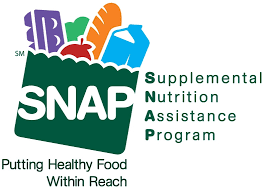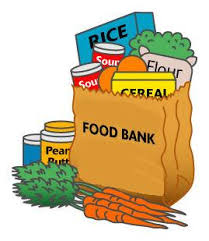 There seems to be some surprise that there is
a need for food assistance in North Dakota, the state with the best economy in
the nation. While it’s true that the oil boom has brought prosperity to many in
the state, it has also brought rising costs of living for housing, food,
childcare and other necessities.
There seems to be some surprise that there is
a need for food assistance in North Dakota, the state with the best economy in
the nation. While it’s true that the oil boom has brought prosperity to many in
the state, it has also brought rising costs of living for housing, food,
childcare and other necessities.
For example, at the same time the economy was
taking off in 2009-2010, the poverty rate also increased,
marking the first statistically significant increase since 2004. In 2011, 1 in 8 North Dakota
people lived below the poverty line, meaning earning less than about $23,000 per
year for a family of four. Put another way, 12.5 percent or 81,000
residents live at or below poverty level, including 24,116 children.
 Did you know that 76 percent of low income
families work? And that a fourth of working families have low incomes? In fact,
43 percent of households receiving SNAP (the program formerly known as Food
Stamps) benefits have earned income. And here is another fact that some North
Dakotans find surprising: 75 percent of North Dakota’s children born in 2011
were served by WIC, the special food and nutrition education program for low
income mothers and children up to age 5 with nutrition risks.
Did you know that 76 percent of low income
families work? And that a fourth of working families have low incomes? In fact,
43 percent of households receiving SNAP (the program formerly known as Food
Stamps) benefits have earned income. And here is another fact that some North
Dakotans find surprising: 75 percent of North Dakota’s children born in 2011
were served by WIC, the special food and nutrition education program for low
income mothers and children up to age 5 with nutrition risks.
When it comes to having enough money for
food, 1 in 9 North Dakotans is food
insecure, meaning that they do not have enough food every day for a healthy,
active life. That includes nearly six percent of our senior citizens and 13 percent
of children, or around 17,000 kids.
 The efforts of the Great Plains Food Bank and
the statewide network of food pantries, soup kitchens and shelters, along with
programs like SNAP, WIC and school lunch and breakfast programs, play an
important role in helping support parents in caring for our children. Hungry
children cannot perform to their fullest ability in school, nor can employees
fully concentrate and be their most productive at work without enough healthy
food.
The efforts of the Great Plains Food Bank and
the statewide network of food pantries, soup kitchens and shelters, along with
programs like SNAP, WIC and school lunch and breakfast programs, play an
important role in helping support parents in caring for our children. Hungry
children cannot perform to their fullest ability in school, nor can employees
fully concentrate and be their most productive at work without enough healthy
food.
Senior meals programs for our older residents help provide quality, safe and
adequate food, opportunities for socialization and help people remain living in
their own homes and communities. In 2011, more than a million meals were served
through home-delivered “meals on wheels” and meals at senior centers across the
state.
 As Governor Dalrymple noted in his State of
the State address,
As Governor Dalrymple noted in his State of
the State address, “
Taking care of our own is what we
do in North Dakota.” And the recent report summary from the North Dakota 2020 and Beyond effort
recognizes the need to address these issues by recommending the efforts of the
Creating a Hunger Free North Dakota Coalition.
Though not a new sentiment, we believe “It
takes a village to raise a child.” And making sure that our children and all
our state’s residents can access enough healthy food is one thing we can do to
end hunger in our state by 2020. We have the resources; we just need to find
the will.
Writing for the North Dakota Economic Security
and Prosperity Alliance,
Karen K. Ehrens, R.D., L.R.D.
Bismarck, ND 58501

No comments:
Post a Comment